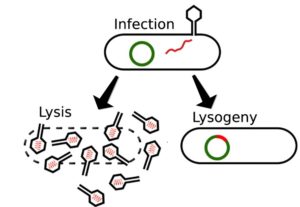 Hosts: Vincent Racaniello, Elio Schaechter, and Michael Schmidt
Hosts: Vincent Racaniello, Elio Schaechter, and Michael Schmidt
Vincent, Elio and Michael discuss the finding of a prion in bacteria, and how communication between bacteria guides the decision between lysis and lysogeny.
Right click to download TWiM#146 (39 MB .mp3, 54 minutes)
Subscribe to TWiM (free) on iTunes, Stitcher, Android, RSS, or by email. You can also listen on your mobile device with the Microbeworld app.
Become a Patron of TWiM!
Links for this episode
- ASM 2017 Election is Open! VOTE HERE
- Prions in bacteria (Science)
- Communication guides lysis-lysogeny decisions (Nature)
- Letters read on TWiM 146
This episode is brought to you by Blue Apron. Blue Apron is the #1 fresh ingredient and recipe delivery service in the country. See what’s on the menu this week and get your first 3 meals free with your first purchase – WITH FREE SHIPPING – by going to blueapron.com/twim
Music used on TWiM is composed and performed by Ronald Jenkees and used with permission.
Send your microbiology questions and comments to [email protected]





The 2nd paper about arbitrium highlighted gaps in my knowledge and left me with unanswered questions. In fact, I needed to relisten to segments f the discussions multiple times to be clear about what I didn’t understand. May I have a review of some terms and techniques?
Making “conditioned medium” is a new term for me. Is it media that has had bacteria grown in it? How long does bacteria need to be grown to be considered “conditioned”?
What is the significance; when and why is it used?
Could you please review the significance/function of “open reading frames and end terminal peptides”; “noncoding regions” ?
Also the terms:
“Helix turn helix motif “?
“Chip sequencing”?
were new to me. Could you or your co-hosts give some background and context for those terms/techniques/uses?
And “quorum sensing” makes sense to me. Is it correct to think of it as describing a population’s behavior (growth, genetic expression) based on its own density and resources available to support its viability?
Hope my knowledge gaps are not too basic and elementary. I really became concered when Prof Schmidt’s suggested there was a good follow-up project appropriate high school project (or was that meant for the first paper)!
As always, warmest wishes (especially at this time of year on the east coast) and many thanks. Johnye
Johnye Ballenger